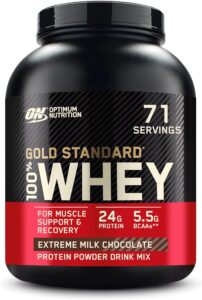
Michael B. Jordan: Biograph
Michael B. Jordan is an American actor, producer, and director known for his compelling performances in film and television. Born on February 9, 1987, in Santa Ana, California, Jordan gained prominence for his role as Wallace in the critically acclaimed HBO series “The Wire.” He continued to make a name for himself with his performance as Vince Howard in the TV series “Friday Night Lights.” Jordan achieved significant success in film with his role as Oscar Grant in “Fruitvale Station” (2013), directed by Ryan Coogler, which earned him widespread acclaim. He later collaborated with Coogler again in “Creed” (2015), playing the role of Adonis Creed, the son of Apollo Creed from the “Rocky” franchise. The role garnered him critical praise and solidified his status as a leading man.
Jordan’s career reached new heights with his portrayal of Erik Killmonger in Marvel’s “Black Panther” (2018), a role that received both commercial and critical success. Known for his versatility, intensity, and commitment to his roles, Jordan is recognized as one of Hollywood’s most talented actors. He is also an active producer and has taken on directing roles, demonstrating his multifaceted talents in the entertainment industry.
Michael B. Jordan, known for his powerful performances in movies like “Fruitvale Station,” “Black Panther,” and the “Creed” series, has become a symbol of athletic prowess and dedication to fitness. His portrayal of Adonis Creed in “Creed III” required an intense workout plan to achieve a boxer’s physique. This detailed article explores the rigorous training regimen and nutritional strategies Jordan used to prepare for his role in the third instalment of the popular franchise.
The Goal: A Boxer’s Body
In “Creed III,” Michael B. Jordan had to look and move like a professional boxer. The training program aimed to build muscle, reduce body fat, increase endurance, and hone boxing skills. Achieving this goal required a comprehensive approach involving strength training, cardio workouts, boxing drills, and a carefully managed diet.
The Training Plan
Jordan’s workout plan for “Creed III” was developed in collaboration with experienced trainers and fitness experts. It focused on four key areas: strength, endurance, flexibility, and boxing technique.
Strength Training
To build muscle and strength, Jordan engaged in a rigorous weightlifting regimen. His strength training program included:
– Compound Exercises: Squats, deadlifts, and bench presses formed the core of his routine, targeting multiple muscle groups simultaneously.
– Isolation Exercises: Exercises like bicep curls, tricep extensions, and lateral raises helped define and sculpt specific muscles.
– High-Intensity Interval Training (HIIT): To burn fat and improve cardiovascular fitness, Jordan incorporated HIIT into his strength training sessions, often with circuits that combined weightlifting and cardio.
Strength training sessions typically lasted 60-90 minutes, focusing on different muscle groups each day to allow for proper recovery.
Endurance and Cardio Workouts
Endurance was crucial for a boxer’s performance in the ring. Jordan’s cardio workouts were designed to boost stamina and endurance, preparing him for long hours of filming and intense boxing sequences. His cardio routine included:
– Running: Daily runs varying in distance and intensity. Some runs were steady-state for building base endurance, while others involved sprint intervals to improve explosive power.
– Jump Rope: A staple in a boxer’s training, jump rope workouts helped improve footwork, coordination, and cardiovascular fitness.
– Swimming: Swimming added variety to his cardio routine, offering a full-body workout with low impact on the joints.
Boxing Training
To ensure his boxing skills were authentic, Jordan worked with professional trainers to master the techniques used by real boxers. This part of his training included:
– Shadow Boxing: Practicing movements, combinations, and footwork without an opponent, allowing him to focus on technique.
– Heavy Bag Work: Jordan used heavy bags to build power and endurance, focusing on different punch combinations and intensity.
– Mitt Work: This involved hitting pads held by a trainer, allowing him to work on accuracy, timing, and combinations.
– Sparring: To simulate real boxing matches, Jordan engaged in sparring sessions with partners, honing his skills in a controlled environment.
Boxing training often took place after strength or cardio workouts, providing an additional level of intensity to his daily routine.
Nutrition and Diet
A key component of Jordan’s transformation for “Creed III” was his diet. He worked with nutritionists to create a meal plan that supported muscle growth while reducing body fat. His dietary approach included:
High Protein Intake: Lean meats, eggs, and protein shakes formed the backbone of his diet, promoting muscle growth and repair. Consistent protein intake helped in maintaining muscle mass during intense training periods.
Complex Carbohydrates: To fuel his workouts and maintain energy levels, Jordan consumed complex carbohydrates such as whole grains, sweet potatoes, and brown rice. These carbs ensured he had sustained energy for both his workouts and long filming days.
Healthy Fats: Sources like avocados, nuts, and olive oil provided essential fatty acids and supported overall health. These fats also played a role in hormone production, which is vital for muscle growth and recovery.
Hydration: Staying hydrated was crucial, with Jordan drinking plenty of water throughout the day. Proper hydration helped in muscle recovery and maintaining peak performance during workouts.
Jordan’s diet also involved meal prepping and careful portion control to ensure he met his caloric and macronutrient goals. Cheat meals were allowed occasionally to maintain balance and prevent burnout.
Michael B. Jordan’s workout plan for “Creed III” was a comprehensive approach that combined strength training, cardio workouts, boxing drills, and a disciplined diet. The dedication and hard work he put into his training transformed his physique and performance, allowing him to convincingly portray Adonis Creed on the big screen. His journey is a testament to the commitment required to achieve peak physical condition for a role, inspiring audiences and fitness enthusiasts alike. Beyond physical transformation, Jordan’s disciplined regimen underscores the importance of mental toughness and consistency. The rigorous training and dietary restrictions highlight the behind-the-scenes efforts actors undertake for their roles. Jordan’s transformation serves as a powerful reminder of what can be accomplished with determination and a well-structured plan.










